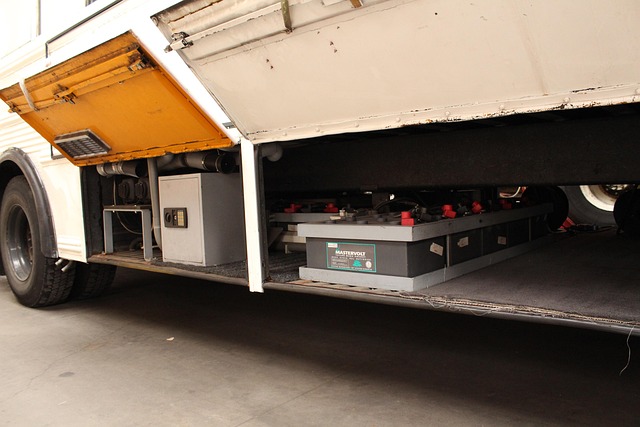Looking to register your car in California? This comprehensive guide walks you through the entire process, from understanding key requirements to securing your registration plate. We’ll break down each step, including gathering essential documents for VIN verification, conducting a vehicle inspection and title check, submitting applications with the DMV, and receiving all necessary paperwork. Get ready to hit the road legally!
- Understand California Car Registration Requirements
- Gather Necessary Documents for Vin Verification
- Perform Vehicle Inspection and Title Check
- Submit Applications and Fees to DMV
- Receive Your Registration Plate and Documents
Understand California Car Registration Requirements

Before registering your car in California, it’s crucial to understand the state’s specific requirements. One key step is confirming the vehicle’s identity through a process known as vin verification. This involves checking the Vehicle Identification Number (VIN), which uniquely identifies every car, and ensuring it matches the details on the title and other documents.
In California, you’ll need to present proof of ownership, a valid driver’s license, and the completed registration application to the Department of Motor Vehicles (DMV). Additionally, your vehicle must pass an emissions test, if required, depending on its age and model. For added convenience, many mobile vin verifiers and vin inspections are available, allowing you to complete this critical step before visiting the DMV.
Gather Necessary Documents for Vin Verification

Before you begin the registration process in California, it’s crucial to gather all the essential documents for VIN (Vehicle Identification Number) verification. This step is a critical part of ensuring your car’s history and authenticity are accurately represented. For a smooth process, have these key documents ready: your vehicle’s title, proof of insurance, and a valid driver’s license. Additionally, you may need to provide a registration from another state if you’ve recently moved or purchased the vehicle out-of-state.
For a convenient and efficient vin verification, consider utilizing mobile services that offer mobile vin inspection. These services send a professional inspector to your location, saving you time and effort. This is particularly beneficial for those with busy schedules or limited mobility. With just a few simple steps, your vehicle’s information can be verified, clearing the way for a seamless registration experience in California.
Perform Vehicle Inspection and Title Check

Before registering your car in California, it’s crucial to perform a vehicle inspection and title check. This involves verifying the Vehicle Identification Number (VIN) to ensure its authenticity and history. A mobile VIN inspection or using a mobile VIN verifier can streamline this process, allowing you to complete these steps conveniently. By checking the VIN, you gain valuable insights into the vehicle’s past, including any accidents, recalls, or outstanding loans.
This thoroughness is essential in California, where strict regulations mandate that all vehicles on the road meet safety and emissions standards. A mobile VIN verification service can help you navigate this step efficiently, ensuring your car complies with state requirements before registration. Remember, a clean and transparent vehicle history is key to a smooth registration process.
Submit Applications and Fees to DMV

To register your car in California, submitting the necessary applications and fees to the Department of Motor Vehicles (DMV) is a crucial step. This process involves filling out the appropriate forms, providing essential documentation, and paying the required fees. One critical aspect is ensuring accurate and up-to-date information, including a valid vehicle identification number (VIN) verification. A mobile vin verifier can facilitate this process by providing quick and convenient VIN inspection services, ensuring your data is correct before submission.
When submitting your application, make sure to include all required documents, such as proof of ownership, insurance, and identity. You can typically do this either online or in person at a local DMV office. After verifying the information, including the VIN number through a mobile vin verification service if needed, the DMV will process your application, resulting in a registered vehicle title and license plate for your car.
Receive Your Registration Plate and Documents

After completing your vehicle’s registration application, you’ll need to receive your registration plate and necessary documents. This typically involves a few steps. First, your local DMV will perform a Vehicle Identification Number (VIN) verification to ensure the vehicle matches the details provided in the registration paperwork. This is usually done through a mobile VIN inspection or using a mobile VIN verifier to cross-check the data against the manufacturer’s records.
Once the VIN verification is complete and approved, the DMV will issue your registration plate and any other required documents. These might include a registration card, a receipt, and a sticker for your vehicle’s window, all of which are essential for legal on-road use in California. Always keep these documents in a safe place to avoid any future issues or penalties.
Registering a car in California involves understanding specific requirements, gathering essential documents like your vehicle’s VIN for verification, and completing necessary inspections. After ensuring your vehicle meets standards through a title check, you can submit applications and fees to the DMV. Once approved, you’ll receive your registration plate and official documents, marking the successful completion of the process. Remember, accurate vin verification is key throughout these steps.
